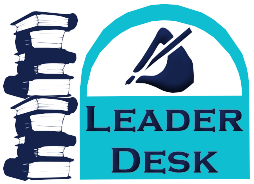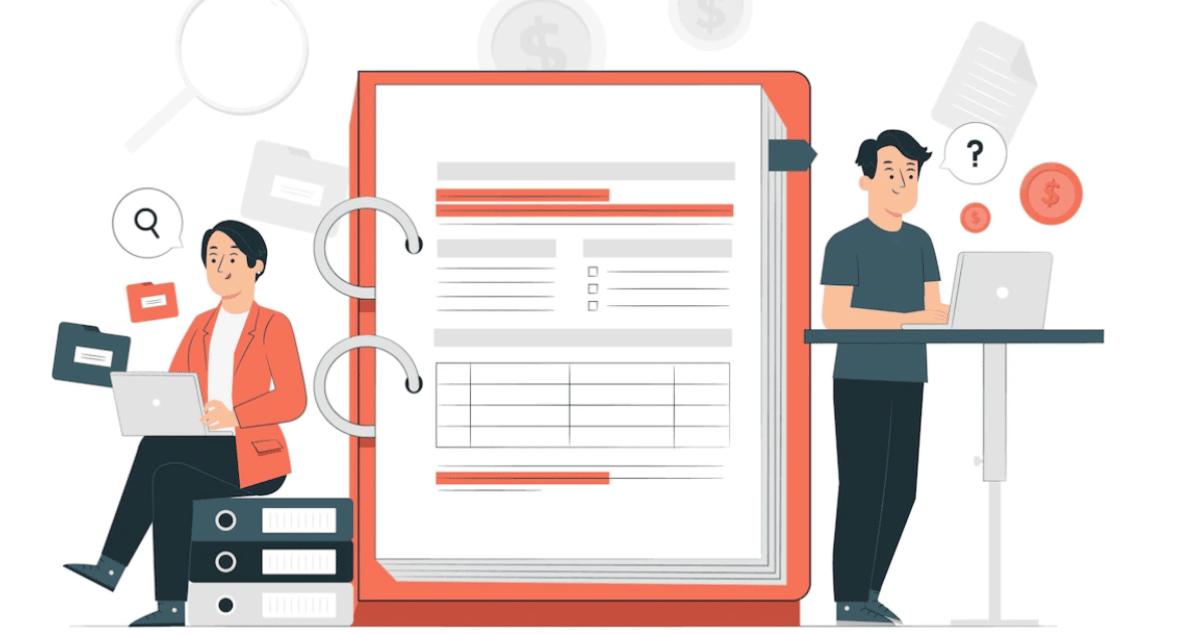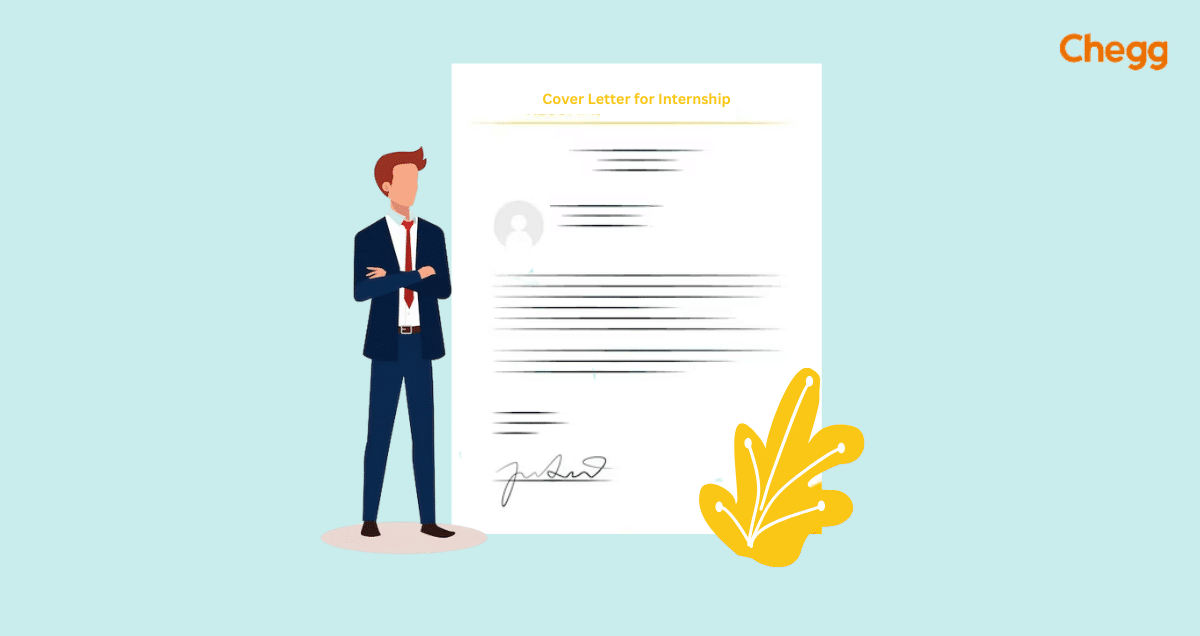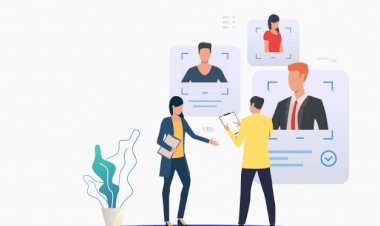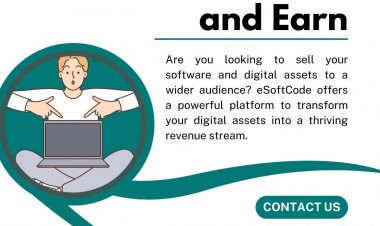Assets and Liabilities: The Ultimate 2025 Guide to Mastering Success
Whether you’re managing a small business, overseeing a multinational corporation, or simply trying to get a better handle on your personal finances, understanding the concepts of assets and liabilities is essential. These two components are at the heart of accounting, and they play a critical role in evaluating financial health, making investment decisions, and planning […] The post Assets and Liabilities: The Ultimate 2025 Guide to Mastering Success appeared first on Chegg India.

Whether you’re managing a small business, overseeing a multinational corporation, or simply trying to get a better handle on your personal finances, understanding the concepts of assets and liabilities is essential. These two components are at the heart of accounting, and they play a critical role in evaluating financial health, making investment decisions, and planning for the future.
In this comprehensive guide, we’ll explore what assets and liabilities are, their different types, their interrelationship, and why managing them effectively can be the key to long-term success.
What Are Assets?
At its core, an asset is something valuable that you or your business owns. It represents a potential source of income or benefit in the future. Assets could be tangible like machinery or cash, or intangible like patents or goodwill.
In financial statements, assets are listed on the left-hand side of the balance sheet, reflecting the total value of everything the entity owns.

Key Characteristics of Assets
Understanding the key characteristics of assets is crucial when analyzing assets and liabilities together, as it allows individuals and businesses to accurately assess what they truly own and how it contributes to their financial position. Below are the core attributes that define an asset:
- Ownership or Control: To qualify as an asset, there must be clear ownership or control by the individual or entity. Whether it’s a physical item like machinery or an intangible resource like a patent, you must have the legal or beneficial right to use, sell, or derive value from it. In the context of assets and liabilities, this ownership is what differentiates an asset from a liability, where obligations are owed rather than owned.
- Future Economic Benefit: An asset must be capable of generating economic value in the future. This could come in the form of direct cash inflow (e.g., rental income from property) or indirect benefits such as reducing future expenses (e.g., owning your own warehouse rather than renting one). When evaluating assets and liabilities, this benefit helps determine an entity’s ability to sustain operations and achieve profitability.
- Measurable Value: Assets must have a quantifiable value that can be expressed in monetary terms. This ensures they can be recorded in financial statements and contribute to accurate assessments of net worth. Unlike many liabilities, which are often clearly documented as debts, assets must be evaluated and appraised, especially when they are intangible or fluctuate in market value.
In financial reporting, identifying and understanding these characteristics helps provide a clearer picture of how assets and liabilities interact, and ultimately, how they shape the financial health of an organization or individual.
Types of Assets
In the context of assets and liabilities, understanding the classification of assets is essential for analyzing financial health. Assets are not one-size-fits-all—they vary based on time frame, physical presence, and their role in business operations. Here’s a breakdown of the major types:
1. Current Assets
Current assets are short-term resources expected to be used, sold, or converted into cash within one year. They play a critical role in managing day-to-day liquidity.
Examples include:
- Cash and Cash Equivalents: Readily available funds like cash, checking accounts, or treasury bills.
- Accounts Receivable: Money customers owe for goods or services already delivered.
- Inventory: Stock of goods ready for sale, raw materials, and work-in-progress items.
- Short-Term Investments: Temporary holdings such as stocks or mutual funds expected to be sold within 12 months.
These assets are key in meeting short-term liabilities and keeping operations running smoothly.
2. Non-Current Assets (Fixed Assets)
Non-current assets provide long-term value, typically beyond a year. They are vital for growth and production but aren’t easily liquidated.
Examples include:
- Property, Plant, and Equipment (PPE): Buildings, machinery, and vehicles used in production or service delivery.
- Long-Term Investments: Assets held over several years, such as bonds, shares, or investment properties.
- Intangible Assets: Non-physical yet valuable items like patents, copyrights, trademarks, and goodwill.
These assets support strategic goals and often generate revenue over an extended period.
3. Tangible vs. Intangible Assets
Assets can also be grouped based on physical form:
- Tangible Assets: Have a physical presence, such as land, tools, office furniture, and factory equipment.
- Intangible Assets: Lack physical substance but hold significant value—think of software licenses, customer databases, and brand reputation.
Both types play a role in asset valuation and financial reporting within the larger assets and liabilities framework
4. Operating vs. Non-Operating Assets
This classification is based on how directly an asset contributes to business operations:
- Operating Assets: Actively used to generate revenue and support core functions—e.g., computers, delivery vans, and production tools.
- Non-Operating Assets: Not essential for daily operations but still valuable, such as vacant land, surplus cash, or investment properties.
Distinguishing these helps businesses measure operational efficiency and evaluate which assets are truly productive.

What Are Liabilities?
A liability is something an individual or company owes to another party. It represents an obligation to pay or deliver a service in the future. Liabilities help fund operations and are crucial for understanding debt levels and risk exposure.
Liabilities are recorded on the right-hand side of the balance sheet, symbolizing the claims of external parties—like lenders or suppliers—over the entity’s assets.
Key Characteristics of Liabilities
To fully grasp the dynamics of assets and liabilities, it’s important to understand the defining features of liabilities. Liabilities represent what a business or individual owes—and recognizing their core characteristics helps in evaluating financial obligations accurately and managing risk effectively.
- Obligation: A liability is the result of a past event, agreement, or transaction that creates a present obligation. For instance, purchasing goods on credit or signing a lease leads to a legal or constructive duty to pay or perform. In the broader context of assets and liabilities, obligations form the basis of what distinguishes a financial resource (asset) from a financial responsibility (liability).
- Future Settlement: Liabilities must be settled in the future, often by transferring assets such as cash, delivering goods, or providing services. This characteristic has a direct impact on cash flow planning and liquidity. For example, upcoming loan repayments or tax dues reduce available assets, which is why analyzing assets and liabilities side by side helps determine whether current resources can meet future financial commitments.
- Legally Enforceable: Most liabilities are backed by legal contracts, agreements, or regulatory obligations, making them enforceable by law. This adds weight to the obligation and increases the importance of accurate liability tracking. From outstanding debts to employee benefit obligations, businesses and individuals must account for liabilities that are not only probable but also legally binding. Understanding this enforceability is essential when assessing the overall balance between assets and liabilities, especially in risk management and financial reporting.
In summary, liabilities are more than just amounts owed—they are structured obligations that shape the financial strategy of any entity. When viewed alongside assets, they offer a complete picture of financial health, debt exposure, and long-term sustainability.

Types of Liabilities
1. Current Liabilities
Due within one year and usually settled using current assets.
Examples:
- Accounts Payable: Money owed to vendors
- Accrued Expenses: Salaries, utilities, rent not yet paid
- Short-Term Loans: Business credit lines or overdrafts
- Taxes Payable: Outstanding tax liabilities
2. Non-Current Liabilities
Due beyond a one-year timeframe.
Examples:
- Long-Term Loans: Bank loans, mortgage payments
- Bonds Payable: Debt securities issued to raise capital
- Deferred Tax Liabilities: Taxes that are due in the future
- Pension Obligations: Future payments owed to retirees
3. Contingent Liabilities
Potential obligations that depend on future outcomes.
Examples:
- Legal disputes
- Environmental fines
- Product warranties
The Core Accounting Equation
At the heart of all financial accounting lies a simple yet powerful formula:
Assets = Liabilities + Equity
This equation ensures that the books balance. It shows how the assets of a business are financed—either through borrowing (liabilities) or owner investment (equity). Every financial transaction affects this equation, reinforcing its foundational role.
Why Managing Assets and Liabilities Is Crucial
Efficient management of assets and liabilities directly impacts liquidity, profitability, and risk tolerance. Here’s how:
Liquidity Management
Matching current assets to current liabilities helps businesses avoid cash shortages and ensures smooth operations. It ensures that short-term obligations can be met without disrupting day-to-day activities.
Risk Management
Over-leveraging (i.e., having too many liabilities) increases financial risk. Monitoring and managing debt keeps the company solvent and creditworthy. A balanced approach reduces the likelihood of default and financial crisis.
Informed Decision-Making
By analyzing assets, a business can make strategic investments or divest from underperforming resources. This enables smarter allocation of capital for growth and efficiency.
Performance Tracking
An evolving balance of assets and liabilities can reveal trends, such as over-reliance on debt or underutilized assets, enabling corrective action. Regular reviews help fine-tune financial strategies and improve long-term sustainability.
What Is Asset and Liability Management (ALM)?
Asset and Liability Management (ALM) is a strategic financial practice primarily used by banks, insurance companies, and large corporations to manage risk and ensure long-term financial stability. At its core, ALM focuses on aligning an organization’s assets and liabilities in terms of maturity, interest rates, and cash flow timing, so that obligations can be met without disrupting operations or profitability.

Why Is ALM Important?
In any financial institution or business, assets and liabilities are constantly changing. Cash inflows from assets (like loans, investments, or receivables) must be properly timed to meet the outflows required by liabilities (such as deposits, policyholder claims, or loan repayments). Poor alignment can lead to:
- Liquidity crises
- Increased interest rate risks
- Credit rating downgrades
- Profitability challenges
ALM helps institutions avoid such risks by enabling better forecasting, planning, and decision-making.
Key Objectives of ALM
-
Avoid Cash Flow Mismatches
ALM ensures that incoming cash from assets is available when liabilities fall due. This reduces the risk of running out of funds during critical periods. -
Reduce Interest Rate Risk
Changes in interest rates can affect both assets (like loan returns) and liabilities (like borrowing costs). ALM helps strike a balance between fixed and variable interest-bearing instruments. -
Maintain Adequate Liquidity
ALM policies ensure that an institution always has sufficient liquid assets to meet short-term obligations, even under stressed market conditions. -
Maximize Profitability
By efficiently managing the gap between asset returns and liability costs (called the spread), institutions can improve earnings without increasing risk.
Example of ALM in Action
Consider a bank that issues long-term home loans (assets) to customers but funds these loans through short-term customer deposits (liabilities). If a large number of depositors withdraw their money suddenly or interest rates rise sharply, the bank could struggle to meet its obligations despite having high-value loans on its books.
This mismatch can lead to liquidity issues and reputational damage. Asset and Liability Management helps banks anticipate such scenarios by analyzing various risk models, adjusting investment strategies, and preparing contingency funding plans. It may involve lengthening deposit terms, diversifying funding sources, or holding more short-term liquid assets.
Who Uses ALM and How?
- Banks: For interest rate risk management and liquidity planning.
- Insurance Companies: To match long-term policyholder payouts with long-term investment returns.
- Corporates: To plan capital structure, debt servicing, and investment timing.
Real-Life Examples of Assets and Liabilities
Understanding the practical application of assets and liabilities helps bridge the gap between theory and real-world financial decision-making. Below are relatable examples from both business and personal finance contexts to show how these two elements function together.
Purchasing Equipment
When a business acquires machinery or technology:
- Asset: The equipment purchased becomes a long-term asset as it contributes to productivity and revenue generation over time.
- Liability: If the equipment is not paid for upfront and is financed through a loan or supplier credit, the owed amount becomes a liability until it is fully settled.
This transaction increases both the company’s assets and liabilities, affecting the balance sheet but also potentially enhancing future income.
Taking a Business Loan
Loans are a common financial tool for expansion or cash flow support:
- Asset: The cash received from the loan is recorded as a current asset because it increases the company’s usable funds.
- Liability: The borrowed amount, along with the obligation to pay interest, is classified as a liability—short-term or long-term depending on the repayment period.
Here, understanding assets and liabilities is crucial for debt management and planning future repayments without harming operations.
Read More: strategic thinking in business
Selling Goods on Credit
Credit sales are routine in many businesses:
- Asset: The amount owed by customers becomes accounts receivable, a current asset that represents future cash inflow.
- Liability: Depending on local tax laws, the business may be required to pay sales tax on the transaction even before collecting payment, creating a tax liability.
This highlights the importance of tracking assets and liabilities to ensure proper liquidity and tax compliance.
Personal Finances
Assets and liabilities are not just business terms—they play a role in everyday personal finance too:
- Your Car = Asset: It holds value and can be sold or used for transportation.
- Car Loan = Liability: Until the loan is repaid, it’s an obligation that reduces your net worth.
- Your Home = Asset: A real estate property typically appreciates over time, making it a valuable long-term asset.
- Mortgage = Liability: The outstanding home loan is a long-term liability that needs consistent repayment.
By comparing personal assets and liabilities, individuals can better understand their net worth and make informed decisions about borrowing, saving, or investing.
Conclusion
In the ever-evolving world of finance, understanding assets and liabilities is more than just a fundamental accounting exercise—it’s a critical life skill. Whether you’re managing household expenses, running a business, or investing for the future, knowing what you own and what you owe provides clarity and direction. These components serve as building blocks for budgeting, credit decisions, and long-term financial planning, ultimately shaping your overall financial health.
By actively tracking and managing assets and liabilities, individuals and organizations can stay prepared for uncertainties, make informed choices, and avoid potential financial pitfalls. The balance between them tells a story—not just of wealth, but of responsibility, strategy, and foresight. As you grow financially, regularly revisiting this balance can help you stay on course, refine your goals, and unlock greater opportunities for sustainable success.
Frequently Asked Questions (FAQ’s)
What is the main difference between assets and liabilities?
Assets are resources owned by an individual or business that provide future economic benefits, while liabilities are obligations that require the entity to settle a debt or service in the future. In simple terms, assets bring value, and liabilities represent what is owed.
Can an asset also be a liability?
Not exactly. An asset and a liability are opposites in accounting. However, one transaction can create both—like buying equipment on credit. The equipment is an asset, while the unpaid amount becomes a liability.
Why is understanding assets and liabilities important for financial planning?
Knowing your assets and liabilities helps determine your net worth, evaluate risk, and make better decisions about budgeting, saving, investing, and borrowing. It forms the basis of smart financial management.
What are examples of intangible assets and liabilities?
Intangible assets include things like trademarks, patents, and goodwill. Intangible liabilities are less common but may include obligations like deferred revenues or legal contingencies.
How do assets and liabilities affect a company’s balance sheet?
Assets and liabilities are the two main components of a company’s balance sheet, with the difference between them representing the owner’s equity. The balance sheet always follows the equation: Assets = Liabilities + Equity.
What happens if liabilities are greater than assets?
If liabilities exceed assets, it indicates a negative net worth, which could be a warning sign of financial distress or insolvency. It’s a critical metric that businesses and individuals should monitor closely.
The post Assets and Liabilities: The Ultimate 2025 Guide to Mastering Success appeared first on Chegg India.
